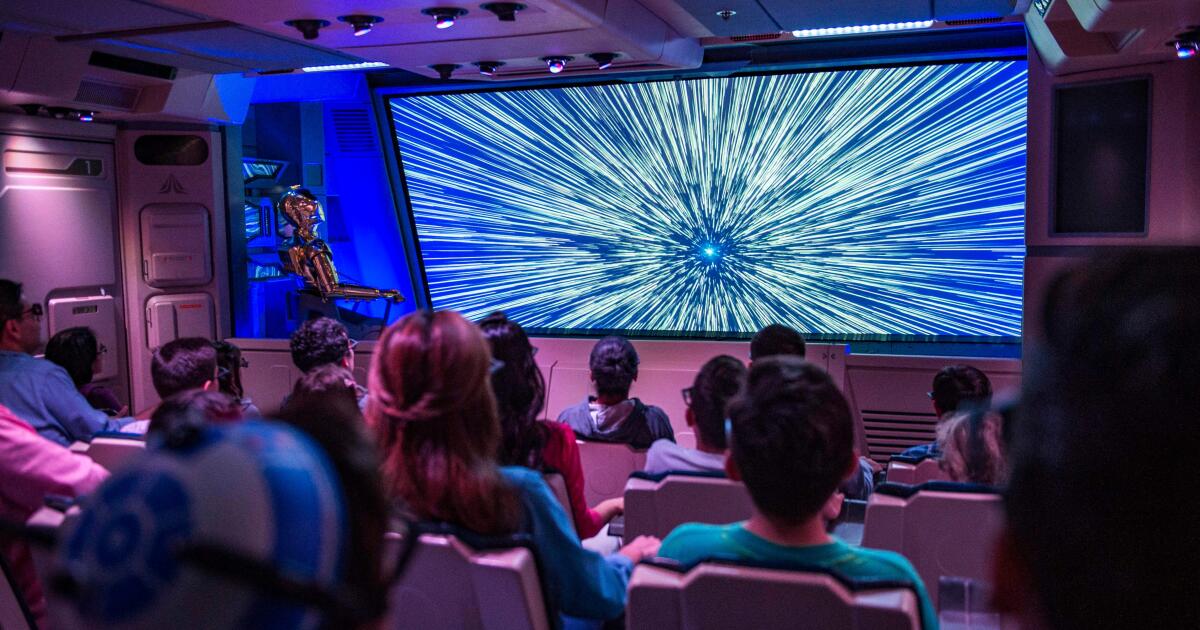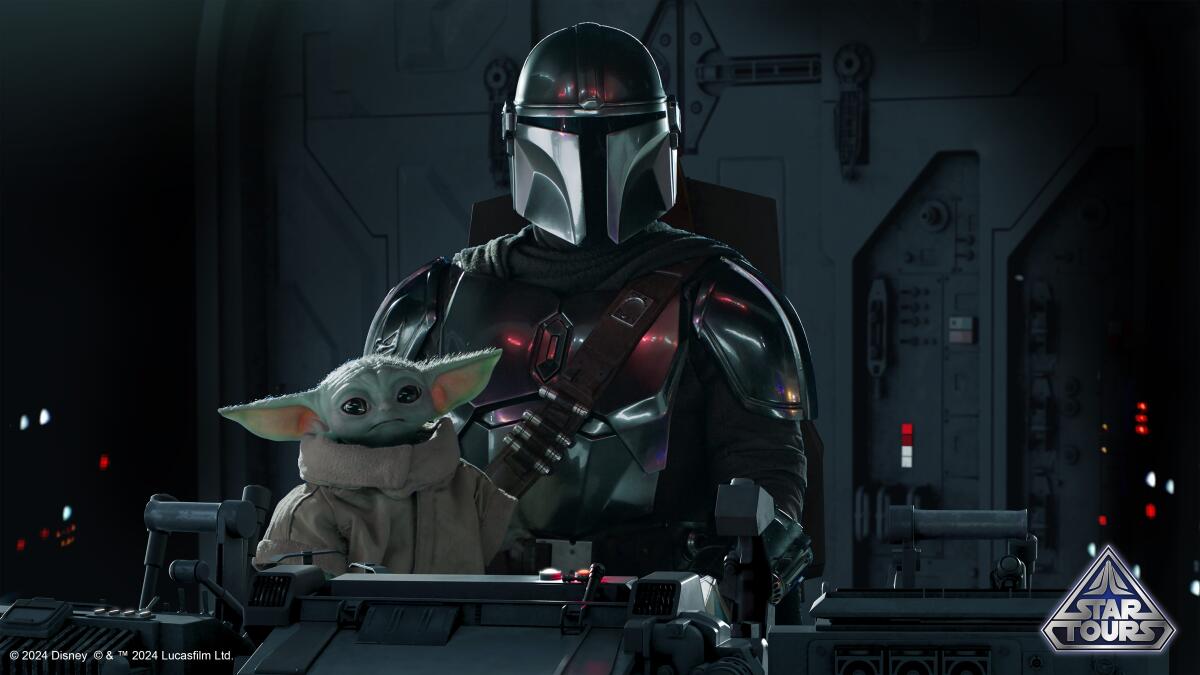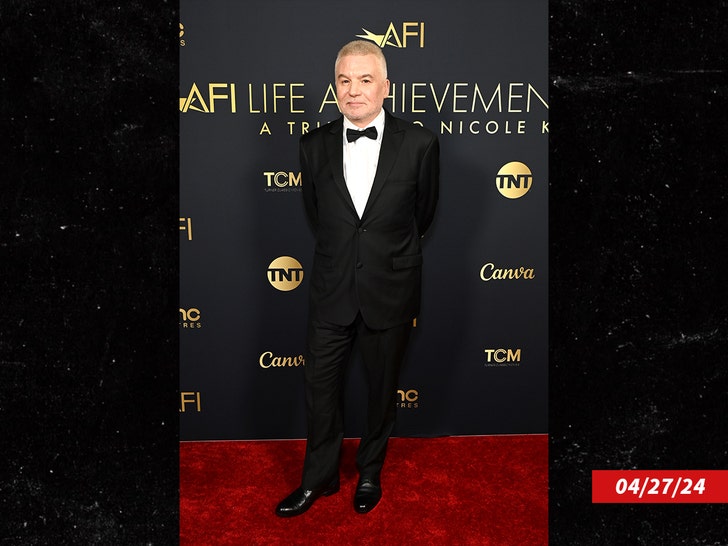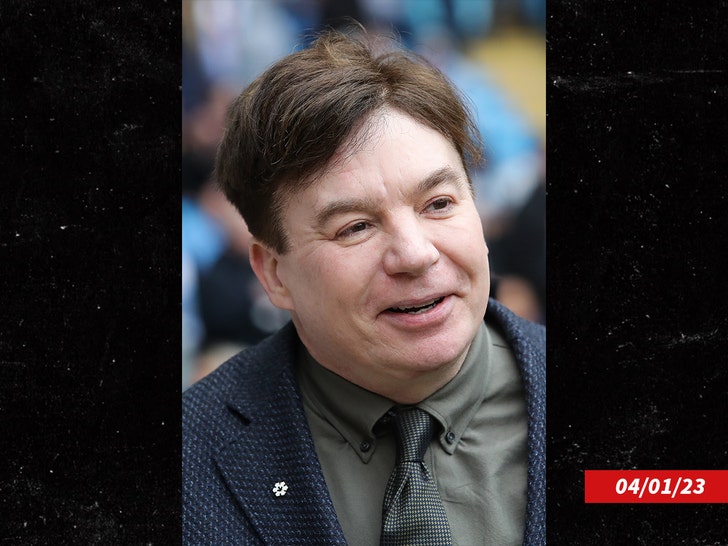Lifestyle
The unmissable addition to Disneyland's Star Tours ride? Space whales

Disneyland’s Star Tours: The Adventures Continue has proved to be one of the theme park’s most versatile attractions.
Though perhaps no longer the groundbreaking technological marvel that it was when it debuted in 1987, the flight simulator ride has shifted with the franchise, withstanding cultural trends and aligning with whichever version of “Star Wars” is popular at the moment — or in need of a marketing boost.
The latest update to Star Tours brings the ride into the Disney+ era, with nods to series such as “The Mandalorian,” “Ahsoka” and “Andor.” More noteworthy, at least for Disneyland guests, is that the centerpiece of the latest upgrades is a scene that provides a slight tonal shift for the attraction, one focused, albeit briefly, on slowing down and giving so-called starspeeder riders a look at one of “Star Wars’” more majestic creatures. Star Tours will now rocket guests straight to a moment that boasts a close-up with the purrgil, essentially large, mysterious space whales that move with a galactic grace.
For the 3-D attraction, its a moment that provides a breather. The motion simulator lingers for a few seconds, and our makeshift animatronic captain, the golden droid C-3PO, turns to face riders. C-3PO shifts into tour guide mode, appearing in awe of the purrgil and commenting on how serene the animals are.
“This will be different from other sequences, to have a moment,” said Tom Fitzgerald, a senior creative executive with Walt Disney Imagineering, the company’s secretive arm devoted to theme park attractions, when asked about taking a patient approach to the scene. “You don’t get many moments. It’s so compact. But it’s a moment to let people look at the beauty of this, and the 3-D gives you the scale of those creatures.”
The additions to Star Tours are arguably the centerpiece of Disneyland’s all-things-”Star Wars” promotion Season of the Force, which debuted this past weekend and runs through June 2. The “Star Wars” festival also sees new droids making their way to Star Wars: Galaxy’s Edge through the duration of the event, as well as the return of Space Mountain overlay Hyperspace Mountain and a new free scavenger hunt that aims to get players to pay close attention to the minute details of Galaxy’s Edge.
Fitzgerald has been with Star Tours since the ride’s beginning, and oversaw the latest Star Tours additions, which further deviate the attraction from any strict “Star Wars” timeline and instead focus it on being a sort of “greatest hits” for the brand. The purrgil scene also features Rosario Dawson’s Ahsoka Tano and the character’s svelte, fast-rotating starship above the planet of Seatos. Tano’s ship inspired Imagineers to see if they could add some new tricks to the attraction, mainly in the way the simulator can move. When Tano’s vessel twists and spins, for instance, the starspeeder attempts to mimic it, endeavoring to create the feeling of a 360-barrel roll. At other times, the starspeeder glides among the purrgil.
Key to Star Tours’ longevity, and what makes it the rare motion simulator that doesn’t feel rooted in the 1980s, is its ability to create new sensations via its movements. The ride now has more than 250 storyline variations, and when adding to the attraction, Imagineers are looking for ways to heighten the contrast among its various scenes, both tonally and in its maneuvers. Though Star Tours is typically randomized — for the foreseeable future, and definitely throughout Disneyland’s spring Season of the Force promotion — all riders are guaranteed to visit the new location and receive an early-flight transmission from one of the recently added characters.

Newly added to Star Tours is a transmission sequence from Din Djarin and Grogu.
(Disneyland Resort)
“How do we make each of the places we go have a different color palette?” says Fitzgerald, who then recalls different “Star Wars” planets that can be featured in the attraction’s random programming. “Mustafar is all lava. Kashyyyk is all green jungle. So they feel very different when you get the combos. And then motion-based. Could we do a barrel roll? That’s the fun of doing it, and programming it and trying it. And we needed something else. What have we not done? So with the purrgils, what if we do skiing through the tentacles? We had never done that. So those are the two big motion changes.”
The attraction is also livened up by appearances from Dawnson’s Tano, Diego Luna’s Cassian Andor and a masked Din Djarin from “The Mandalorian.” While the latter is played and portrayed by Pedro Pascal on the Disney+ series, many have noted that the Djarin on “Star Tours” features a slightly different vocal cadence than Pascal, and an Imagineering spokesperson says the company is not revealing its voice actors for the attraction. Nevertheless, “The Mandalorian” moment features some comic relief — and clever 3-D usage — courtesy of Grogu, colloquially refered to as “baby Yoda,” and his penchant to use Force powers to toy with and eat frogs.
The three appear as transmissions that help define the suddenly urgent narrative of Star Tours. “Each one is different,” Fitzgerald says. “Mando and Grogu we played for comedy. And Andor is mysterious. You don’t see his face. You see this thing coming toward you. Is that a friend or foe? And then he pulls his hood and the music changes.” Tano, meanwhile, arrives like an old friend who knows C-3PO and fellow droid R2D2. Riders are advised to pay close attention to the opening cinematic in a ship’s hangar, as there is a new randomized opening that features Tano in a lightsaber battle with Stormtroopers.
As for why the new additions perhaps lean a bit more heavily on “Ahsoka,” as it is that series that features the planet of Seatos and the purrgil, Fitzgerald had a simple answer: yes, it’s the space whales.
With access to early scripts from Lucasfilm, Fitzgerald says he singled out the purrgil scenes. “Reading about that, not knowing what they looked like initially, I was going, that’s going to be really cool.” And, at least for a few seconds, relatively calming.

Lifestyle
As National Poetry Month comes to a close, 2 new retrospectives to savor

W. W. Norton & Company, Alice James Books

W. W. Norton & Company, Alice James Books
With National Poetry Month comes spring flowers and some of the year’s biggest poetry publications. And as April wraps up, we wanted to bring you two of our favorites — retrospective collections from two of the best poets of the late 20th and early 21st centuries: Marie Howe and Jean Valentine.
Howe’s New and Selected Poems makes a concise case for Howe’s status as an essential poet. The New & Collected Poems of Jean Valentine gathers all of the beloved late poet’s work, a monument to a treasured career.
New and Selected Poems by Marie Howe
Marie Howe is writing some of the most devastating and devastatingly true poems of her career — and some of the best being written by anyone. Her subject matter, from a bird’s eye, is simply the big questions and their non-answers: What are we here for? What does it mean to do good? What have we done to the environment? What are the consequences and what do we who are here now owe to those who will follow us? And yet her tone and straightforward delivery make her poems as approachable as friends. Howe is the rare poet whose poems one wants to hug closely for company, companionship, and empathy; and yet they are works of literature of the highest order, layered, full of booby traps and shoots and ladders that suddenly transport one between the words. It’s tough love that these poems offer, but it’s undeniably love.
This first retrospective gathers a book’s worth of new poems along with ample selections from of Howe’s four previous collections, each of which was a landmark when it was published. Her nearest antecedent might be Elizabeth Bishop, who also didn’t write very much, or didn’t publish very much, but everything she wrote was good if not capitol-G-Great. Howe is best know for What the Living Do (1997), which remains one of the great books on youth and grief, regret, and moving forward if not moving on. It regards a world in which “anything I’ve ever tried to keep by force I lost.” Startling, almost koan-like statements like this erupt out of unassuming domestic scenes, making everyday life into high drama.
The typical speaker of a Howe poem is a woman who seems much like Marie Howe, even when she is speaking through the voice of the biblical Mary, as she does in Magdalene (2017): “I was driven toward desire by desire.” She is serious except when she’s funny, though she’s rarely laugh out loud funny — it’s more of a kind of internal laughter, either like blossoming light or paper rustling in one’s chest. She is consoling, except when she is taking herself and readers to task, bowing under the simple, Herculean responsibilities that come with living a life, being a parent. She’s tough, sometimes even stoic, except that in almost every poem there is a moment of surprise, a revelation, a piercing insight that injects a kind of pure ecstasy.
Some of the new poems are among the best Howe has written, making them among the best period. Set “In the middle of my life — just past the middle,” these poems grieve lost friends; reckon with the sudden adulthood of a daughter; lament the destruction of the environment; and take the moral measure of this very disturbing era. Each of these everyday dramas becomes an access point for the deepest kind of human reconciliation, where we must finally admit where language fails us. These poems also feature a recurring character, “our little dog Jack,” who, with all best intentions, becomes one of Howe’s most devastating metaphors. But all metaphors have their root in plain fact. As Howe writes in “Reincarnation,” one of her best poems, “Jack may be actually himself — a dog.”
Light Me Down: The New and Collected Poems of Jean Valentine
This is one of those monumental events in American poetry: the life’s work of a major poet gathered in one big book, an opportunity to revel in all that Jean Valentine accomplished in her long and prolific career. As a young poet, Valentine (1934-2020) won the Yale Series of Younger Poets prize in 1965, for her debut collection, Dream Barker. In 2004, she won the National Book Award for Door in the Mountain: New and Collected Poems 1965-2003. In between, and after, she was always well regarded by the mainstream poetry establishment, winning most of the prizes available to an American poet.
But Valentine’s real influence was as a friendly ambassador to and from the avant-garde. It’s hard to pin Valentine’s poems down: I wouldn’t call them experimental, but they are anything but straightforward in their slippages of thought and wide leaps of association. Fairly early in her career, Valentine begin working in a style that had her teasing the reader with images, gently suggesting the way the poem should go, until, perhaps, a thunderclap at the end disturbs the calm. She always knows where to end. Pick almost any poem and the last couple of lines will shock you with their unlikely inevitability.
Valentine writes about everything — love, death, sex, the roiling political situations of the last half-century — with simultaneous candor and mystery: “I have been so far, so deep, so cold, so much,” she says prophetically in an early poem. She asserts that poetry can be made almost entirely through suggestion, that the poet must trust the secret links between one word and another, and trust that the reader will be willing to travel with the poet along those underground currents. In a short poem, a haiku from 1992, “To the Memory of David Kalstone,” dedicated to the literary critic who died in 1986, Valentine offers as succinct a statement of her poetics as one could want: “Here’s the letter I wrote,/ and the ghost letter, underneath—/ that’s my life’s work.” Valentine’s poems draw our attention to the words beneath the words, what’s said between them, in all the white space surrounding the poems.
Elsewhere Valentine opts for simple observations, stirred by a bit of mystery, as in the brief elegy “Rodney Dying (3)”:
“I vacuumed your bedroom
one gray sock
got sucked up it was gone
sock you wore on your warm foot,
walked places in, turned,
walked back
too off your heavy shoes and socks
and swam”
There are no sudden bolts of profundity here, nothing, really, that you could call insight, at least not overtly. Instead, Valentine asks an object, the sock, to carry the grief. This is a technique poets call the “objective correlative” — it’s an image that stands in for an emotion or knot of emotions. That unassuming object, or really just the word for it — sock — becomes a vessel, a kind of canopic jar to contain grief, but also to let it rattle around a bit. The poem ends with what might be an allegory for death, but is also a celebration of Rodney’s vitality. The language is as plain as can be, and yet I exit the poem with uncertainty, equally hopeful and despairing. Valentine is an expert at tensing these sorts of contradictions against one another. The emotional climate in Valentine’s poems is ambivalent in the best way, lit by contradictory energies.
And while this book is a monumental celebration of an extraordinary legacy, it is also sad to hold: Valentine was in an inexhaustible and generous force in American poetry until so recently. It feels impossible to accept the fact that she is dead while reading poems that are so profoundly alive.
Craig Morgan Teicher is the author of several books, including The Trembling Answers, which won the 2018 Lenore Marshall Poetry Prize from the Academy of American Poets, and the essay collection We Begin in Gladness: How Poets Progress.
Lifestyle
Mike Myers Debuts White Hair in First Public Appearance in Over a Year

Mike Myers returned to the spotlight for a rare public appearance this weekend … but folks had to do a double take, ’cause nobody could recognize him with his new hair color.
The actor stepped out Saturday for the 49th AFI Life Achievement Award Gala in L.A. — where Nicole Kidman was being honored — which marked his first time at a public event in about a year.

Mike looked unrecognizable with short white hair — but was rocking it proudly as he spoke onstage at one point … and posing for tons of pics before heading inside, all smiles.
He was even taking photos with fans too … acting goofy and posing for a bunch of selfies.
Mike has always kept a relatively low profile … as he and his wife, Kelly Tisdale, are known for keeping their home life super private. So, seeing MM out and about like this is pretty remarkable — especially since he’s a silver fox now, and totally leaning into it.

The last few times Mike was out in public was in April and May of 2023 — in April of that year, his was quite a bit longer … and more importantly, it was the same color of brown we’ve seen him in for years now.

In May, the guy was at a basketball game — with pretty damn good seats, it seems — but there … he was wearing a beanie, covering up his ‘do. Since then, he’s been kinda MIA.
Anyway, it was clearly a big enough occasion to get Mike out of the house and into the public eye again — remember, this was all about Nicole … and anyone who’s anyone showed up to give her her flowers, including a ton of celebs.
Among the stars in attendance … Reese Witherspoon, Joey King, Michelle Pfeiffer, Jane Seymour, Miles Teller, Naomi Watts, Morgan Freeman and lots of others.
Mike certainly stood out though … and we gotta say, he’s looking real sharp these days!
Lifestyle
In 'Dead Boy Detectives,' two best mates reject their deadly fates : Pop Culture Happy Hour

-

 Kentucky1 week ago
Kentucky1 week agoKentucky first lady visits Fort Knox schools in honor of Month of the Military Child
-

 News1 week ago
News1 week agoIs this fictitious civil war closer to reality than we think? : Consider This from NPR
-

 World1 week ago
World1 week agoShipping firms plead for UN help amid escalating Middle East conflict
-

 Politics1 week ago
Politics1 week agoICE chief says this foreign adversary isn’t taking back its illegal immigrants
-

 Politics1 week ago
Politics1 week ago'Nothing more backwards' than US funding Ukraine border security but not our own, conservatives say
-

 News1 week ago
News1 week agoThe San Francisco Zoo will receive a pair of pandas from China
-

 World1 week ago
World1 week agoTwo Mexican mayoral contenders found dead on same day
-

 Politics1 week ago
Politics1 week agoRepublican aims to break decades long Senate election losing streak in this blue state
















